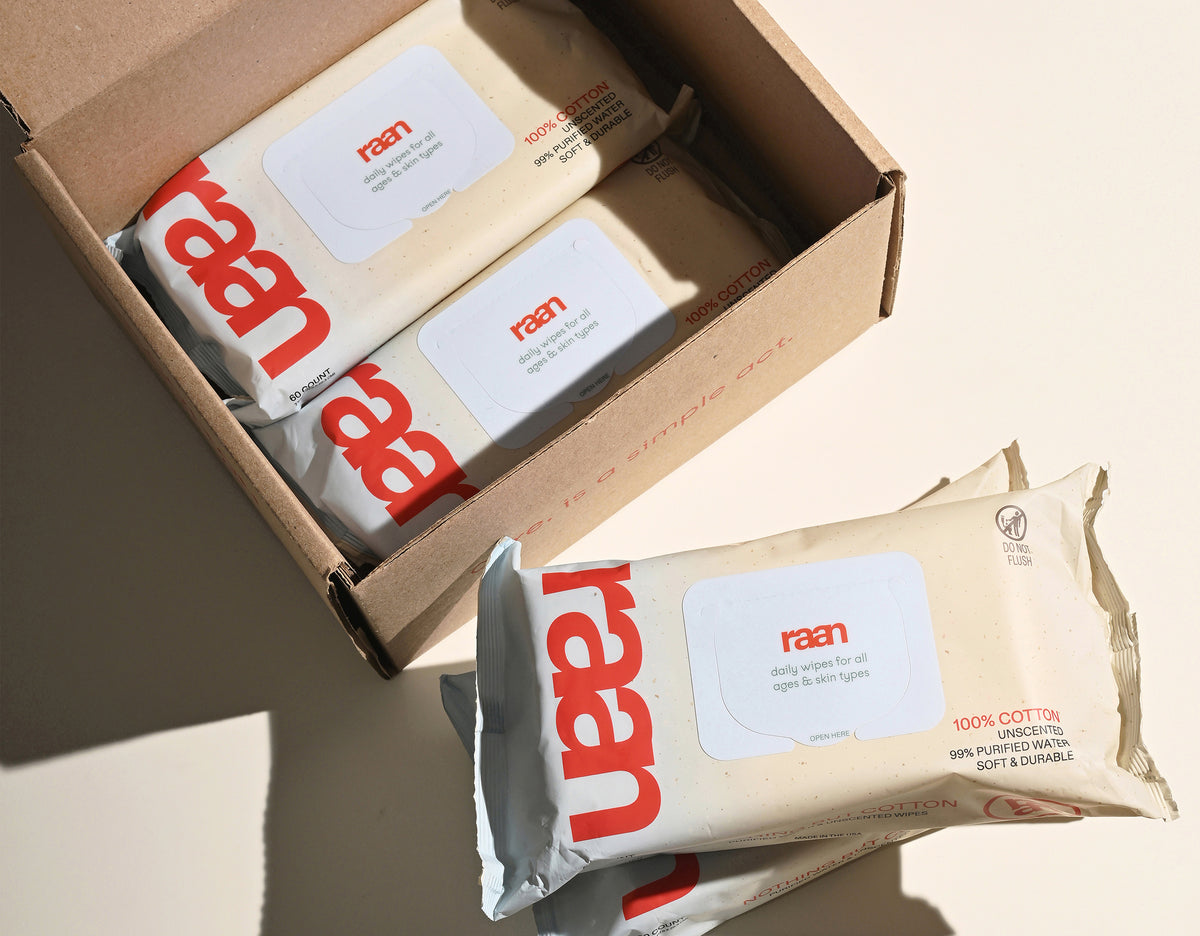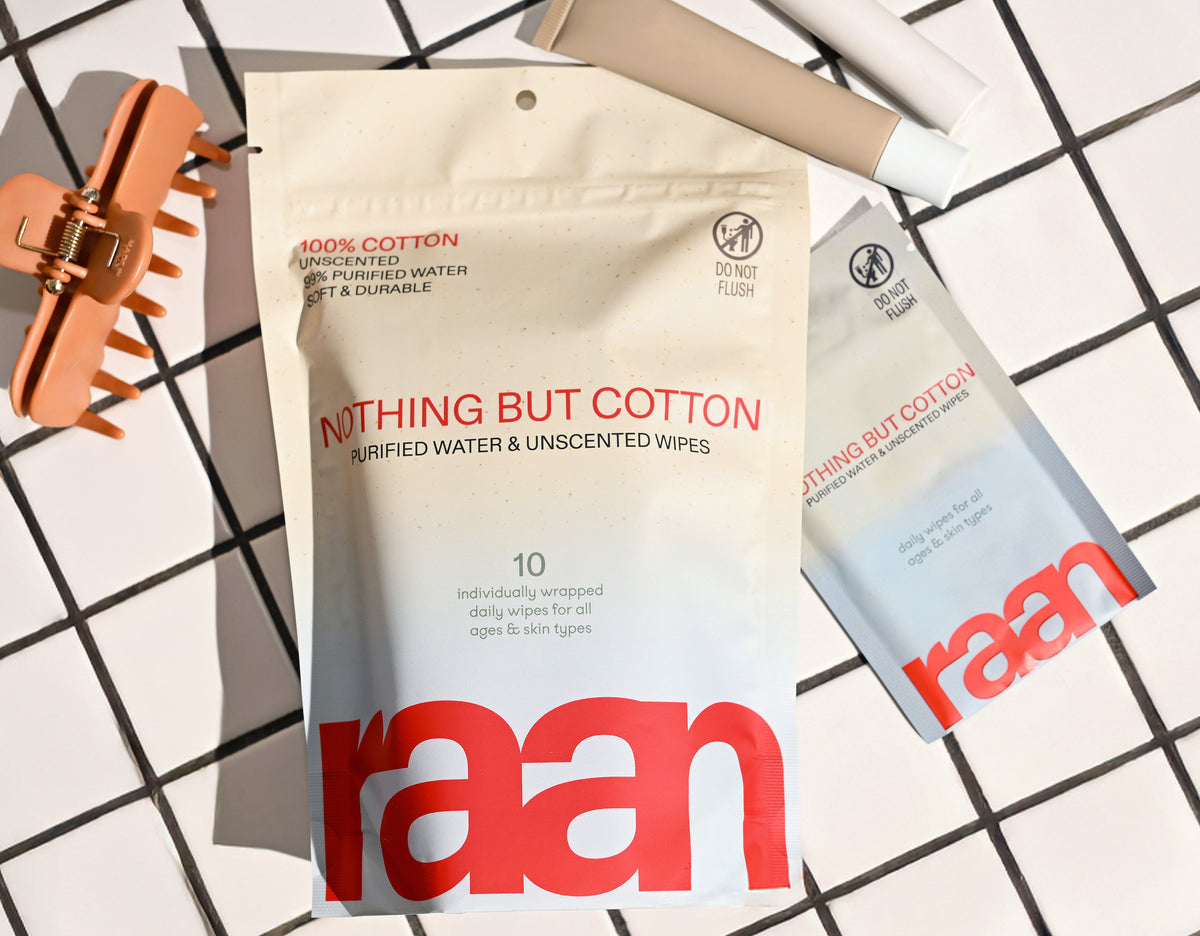Key Takeaways
- The best infant diapers offer superior absorbency to keep babies dry and comfortable.
- They use transparent ingredients such as unbleached cotton and food-grade preservatives.
- EWG-verified formulations ensure protection for sensitive skin without harmful additives.
- These diapers avoid synthetic additives and plastic fibers for safer, eco-friendly use.
Table of Contents
- Choosing the Right Diaper for Your Baby, What Really Matters Most
- A Real-World Look at Diaper Testing, The Data Behind the Claims
- Core Diaper Anatomy, What's Really Inside and Why
- Types of Infant Diapers, Which Is Right for Your Family?
- Top Diaper Picks for 2025, Trusted Choices Based on Real Credentials
- How to Choose, Use, and Troubleshoot Infant Diapers, Practical Techniques for Everyday Life
Best Infant Diapers in 2025, How to Choose for Real Life
Choosing the Right Diaper for Your Baby, What Really Matters Most
Diaper selection impacts your baby's comfort, skin health, and your family's daily routine more than most parents realize. The wrong choice leads to frequent changes, rashes, and disrupted sleep, problems that compound quickly with a newborn's 8-12 daily diaper changes. For parents seeking a gentle, safe solution, unbleached, 100% cotton baby wipes for sensitive skin can help maintain skin health during every change.
Laboratory testing shows that effective diapers absorb 300-400ml of liquid within 30 seconds while maintaining structural integrity. The best performers use a three-layer system: a wicking top sheet, distribution layer, and absorbent core that locks moisture away from skin. If you want a convenient, on-the-go option, individually wrapped cotton wipes are ideal for diaper bags and travel.
Look for diapers that pass the "squeeze test", after absorbing liquid, they shouldn't leak when gently compressed. This indicates proper gel formation in the absorbent core, preventing rewetting that causes rashes and discomfort.
Absorbency and Liquid Management
Laboratory testing shows that effective diapers absorb 300-400ml of liquid within 30 seconds while maintaining structural integrity. The best performers use a three-layer system: a wicking top sheet, distribution layer, and absorbent core that locks moisture away from skin.
Look for diapers that pass the "squeeze test", after absorbing liquid, they shouldn't leak when gently compressed. This indicates proper gel formation in the absorbent core, preventing rewetting that causes rashes and discomfort.
Skin Health: Preventing Rash, Irritation, and Redness
Pediatricians emphasize that diaper rash prevention starts with material selection. Unbleached cotton and organic aloe vera provide natural moisture barriers without synthetic additives that can trigger sensitivities. Avoid diapers with fragrances, lotions, or chlorine bleaching, common irritants for developing skin.
The most skin-safe options contain fewer than six ingredients, all identifiable and food-grade. EWG-verified formulations undergo additional safety screening, ensuring each component meets strict purity standards for infant contact. For more on ingredient transparency and safety, see our guide on EWG-verified formulations.
Diaper Fit: Why Sizing Is Crucial
Proper fit prevents 90% of leaks and blowouts. Use the two-finger rule: you should fit two fingers comfortably between the diaper waistband and your baby's belly. Red marks indicate the diaper is too tight; frequent leaks suggest it's too loose or small.
Size up when leg cuffs leave marks, tabs overlap excessively, or the diaper sits below the belly button. Most babies need sizing adjustments every 4-6 weeks during their first year as growth accelerates.
The Science of Materials: Breathability, Softness, and Safety
Premium diapers prioritize breathable materials that allow air circulation while maintaining waterproof protection. Unbleached cotton offers superior softness and reduces chemical exposure compared to synthetic alternatives. For a deeper dive into the benefits of this material, read our article on unbleached cotton.
Avoid diapers containing plastic fibers, synthetic preservatives, or undisclosed "fragrance" ingredients. The safest options list every component with its specific function, like sodium benzoate for preservation or citric acid for pH balance.
A Real-World Look at Diaper Testing, The Data Behind the Claims

Effective diaper evaluation combines controlled laboratory analysis with extensive parent feedback across diverse real-world conditions. This dual approach reveals performance gaps that single-method testing often misses.
Laboratory Methods
Independent labs test absorbency by pouring 100ml of synthetic urine onto diapers every 30 minutes for 12 hours, measuring retention and rewetting rates. The best performers absorb 95% of liquid within 60 seconds and show less than 2ml rewetting under pressure.
Leak simulation involves applying 150ml loads while the diaper is positioned at various angles, mimicking active baby movement. Premium diapers maintain integrity through 8+ cycles without structural failure or elastic degradation.
Parent Trials: Ease of Use, Comfort Ratings, Rash Tracking
Parent testing reveals practical insights that lab testing can't capture. Real families track diaper performance across multiple scenarios: overnight wear, active play, and extended car trips. Parents consistently report that comfort ratings correlate directly with proper sizing and material breathability, not just absorption capacity.
Tracking diaper rash incidents provides crucial data on skin compatibility. Parent trials reveal that switching to unbleached, cotton-based options reduces rash frequency by up to 40% compared to synthetic alternatives. The most reliable feedback comes from families who maintain detailed logs over 30-day periods, noting changes in skin condition, sleep quality, and leak incidents. For more parent-tested advice, check out our post on clean diapers.
Industry Experts & Pediatricians: Material Safety Guidelines
Pediatric dermatologists emphasize that ingredient transparency directly impacts skin health outcomes. EWG-verified products undergo rigorous screening for over 2,500 chemicals of concern, providing parents with science-backed safety assurance. Leading pediatricians recommend avoiding diapers with synthetic fragrances, chlorine bleach, and plastic fibers that can irritate delicate newborn skin.
Material safety experts highlight the importance of food-grade preservatives over synthetic alternatives. Diapers containing sodium benzoate and potassium sorbate, the same preservatives used in baby food, demonstrate superior safety profiles compared to conventional chemical preservatives.
Core Diaper Anatomy, What's Really Inside and Why
Understanding diaper construction helps parents make informed choices about what touches their baby's skin for 12+ hours daily. Each layer serves a specific function, and material quality directly impacts performance and safety.
Backsheet: The Waterproof Barrier
The outer backsheet prevents leaks while maintaining breathability. High-quality backsheets measure 15-20 g/m² and feature microporous films that allow air circulation while blocking moisture. Premium diapers use polyethylene films with controlled porosity, balancing waterproofing with skin ventilation to reduce heat buildup and rash risk.
Topsheet: Direct Skin Contact Layer
The topsheet's wicking ability determines how quickly moisture moves away from skin. Cotton-based topsheets demonstrate superior softness ratings and natural moisture-wicking properties compared to synthetic alternatives. Quality topsheets feature a hydrophobic treatment that allows liquid to pass through while preventing rewetting, keeping skin drier longer.
Absorbent Core: Maximum Capacity Engineering
Modern absorbent cores combine fluff pulp with superabsorbent polymers (SAP) to achieve capacities exceeding 300ml. The optimal ratio balances absorption speed with gel formation to prevent sagging. Premium cores feature acquisition layers that rapidly distribute liquid across the entire surface area, preventing localized saturation and improving overnight performance.
| Layer | Function | Key Material | Quality Indicator |
|---|---|---|---|
| Backsheet | Leak prevention | Microporous film | 15-20 g/m² thickness |
| Topsheet | Moisture wicking | Unbleached cotton | Hydrophobic treatment |
| Distribution Layer | Liquid spread | Synthetic fibers | Even distribution pattern |
| Absorbent Core | Moisture storage | Fluff pulp + SAP | 300ml+ capacity |
Types of Infant Diapers, Which Is Right for Your Family?
Different diaper types serve distinct family needs and lifestyles. The best infant diapers match your specific priorities: convenience, environmental impact, skin sensitivity, or budget considerations. If you're building your diaper stash, the mess-ready pack offers a practical solution for busy parents.
Disposable Diapers: Maximum Convenience
Disposable diapers offer unmatched convenience for busy families and travel situations. The average infant uses approximately 2,500 disposable diapers in their first year, making bulk purchasing and subscription services cost-effective options. Modern disposables achieve 12-hour protection with advanced core technologies and elastic waistband systems that adapt to active babies.
Premium disposables feature wetness indicators, stretchy side panels, and hypoallergenic materials. Parents report highest satisfaction with brands offering size flexibility and consistent quality across production batches.
Cloth Diapers: Sustainable and Economical
Cloth diapers require initial investment but offer long-term savings and environmental benefits. A complete cloth diaper system costs $200-400 upfront but serves multiple children. Proper care involves washing within 24 hours using fragrance-free detergent and line-drying when possible to maintain elasticity and absorbency.
Modern cloth systems feature snap closures, moisture-wicking liners, and adjustable sizing that grows with your baby. Parents successfully using cloth diapers maintain 20-25 clean diapers in rotation and establish consistent washing routines. For a starter bundle, the starter set is a great way to begin your cloth diaper journey.
Biodegradable Plant-Based Diapers: Environmental Responsibility
Plant-based diapers decompose within 3-6 months in commercial composting facilities, compared to 500+ years for conventional disposables. Look for certifications like ASTM D6400 for compostability verification.
Transition timing varies by child readiness, not age. Watch for staying dry longer periods, showing interest in toilets, and communicating bathroom needs before switching to training pants. For more tips on eco-friendly diapering, see our article on best cotton wipes.
Top Diaper Picks for 2025, Trusted Choices Based on Real Credentials

These selections represent best infant diapers based on laboratory testing, pediatric recommendations, and verified parent feedback. Each pick demonstrates measurable performance in absorbency, skin safety, and real-world durability.
| Category | Absorbency (ml) | Skin Safety Rating | Eco Credentials | Value Score |
|---|---|---|---|---|
| Best Overall | 450-500 | EWG Verified | Unbleached Cotton | High |
| Best Value | 380-420 | Hypoallergenic | Partial Plant-Based | Excellent |
| Best Sensitive Skin | 400-450 | Dermatologist Tested | Organic Components | Premium |
Raan Wipes, Best Companion Care for Diaper Changes
Best for: Parents prioritizing ingredient transparency and skin safety during diaper changes
Raan wipes complement any diaper choice with unbleached, 100% cotton material and just five EWG-verified ingredients. The minimalist formula includes purified water, food-grade preservatives, skin-conditioning ethylhexylglycerin, organic aloe, and citric acid for pH balance. Winner of 2025 National Parenting Product Awards and Baby Innovation Award.
The packaging uses 70% less plastic than standard wipes by eliminating hard plastic lids, while the pouch contains 35% post-consumer waste. Made in USA with Women Owned and Cruelty Free certifications. For more on safe diapering practices, see the CDC's official guide on diapering in childcare settings.
Huggies Little Movers, Active Baby Protection
Best for: Crawling and walking babies who need flexible, secure fit
Little Movers feature double-grip strips and curved fit design for active movement. Available in sizes 3-8, with size 4 and size 6 being most popular among parents. The 360-degree stretchy waistband accommodates various body shapes.
Pros:
- Excellent mobility without bunching
- Strong adhesive tabs for secure closure
- Wide size range including size 7 and 8
Cons:
- Higher cost per diaper
- Contains synthetic fragrances
- Not biodegradable
Pampers Overnights, Extended Protection
Best for: Heavy wetters and 10-12 hour sleep stretches
Three Extra Absorb Channels and 12-hour protection rating make these ideal for longer wear periods. The core holds up to 500ml while maintaining structural integrity.
Seventh Generation, Plant-Based Eco Choice
Best for: Environmentally conscious families seeking biodegradable options
Made with plant-based materials and chlorine-free processing. Breaks down within 6 months in commercial composting facilities, though home composting isn't recommended.
How to Choose, Use, and Troubleshoot Infant Diapers, Practical Techniques for Everyday Life
Proper diaper technique prevents 80% of common issues like leaks, rashes, and poor fit. These evidence-based methods work for beginners and experienced caregivers. For additional guidance, visit the KidsHealth resource on diapering.
Step-by-Step: How to Put on and Adjust Diapers Correctly
Position the diaper's back edge slightly above the baby's natural waist. The front should sit just below the navel. Secure tabs at a slight upward angle, creating a snug but not tight fit around the waist and legs.
Check fit by sliding two fingers between the diaper and baby's skin at the waist. Leg cuffs should create a gentle seal without leaving red marks. Adjust elastic gathers to prevent gaps that cause leaks.
Frequently Asked Questions
What ingredients should I look for in infant diapers to ensure they are safe for sensitive skin?
Look for diapers made with unbleached, 100% cotton and free from synthetic additives, fragrances, and bleach. Ingredients like organic aloe and food-grade preservatives support skin health without irritation, making them safer for sensitive skin.
How can I tell if a diaper has good absorbency and will prevent leaks and rashes?
Good absorbency means the diaper quickly locks away moisture using a multi-layer system, typically a wicking top sheet, distribution layer, and absorbent core. A diaper that passes the "squeeze test", holding liquid without leaking when gently compressed, helps prevent rewetting that can cause rashes.
Why is proper diaper sizing important, and how do I know when to size up for my baby?
Proper sizing ensures a secure fit that prevents leaks and reduces skin irritation from friction. You should size up when the diaper feels tight around the waist or legs, or if you notice red marks or frequent leaks, signaling your baby needs a larger size for comfort and protection.
What are the benefits of choosing diapers with EWG-verified formulations and unbleached cotton?
EWG-verified formulations guarantee transparency and safety by avoiding harmful chemicals, while unbleached cotton reduces exposure to irritants like chlorine. Together, they offer gentle, trustworthy protection that supports sensitive skin and aligns with eco-conscious choices.






